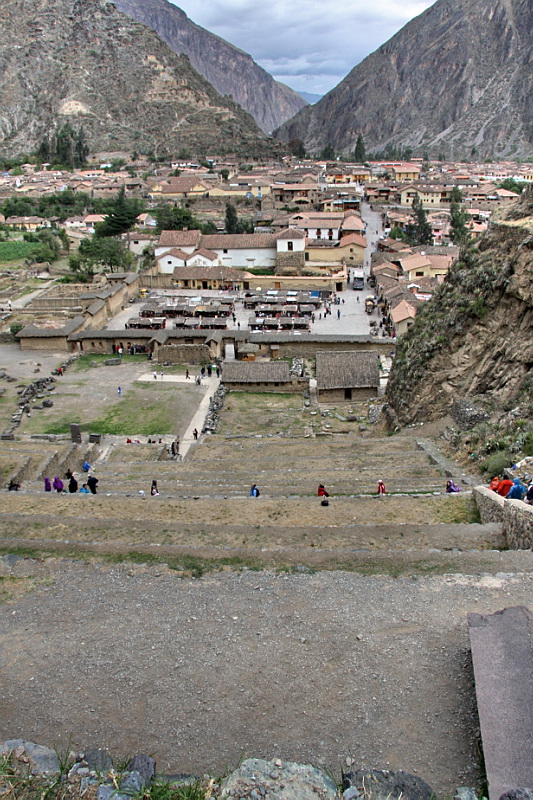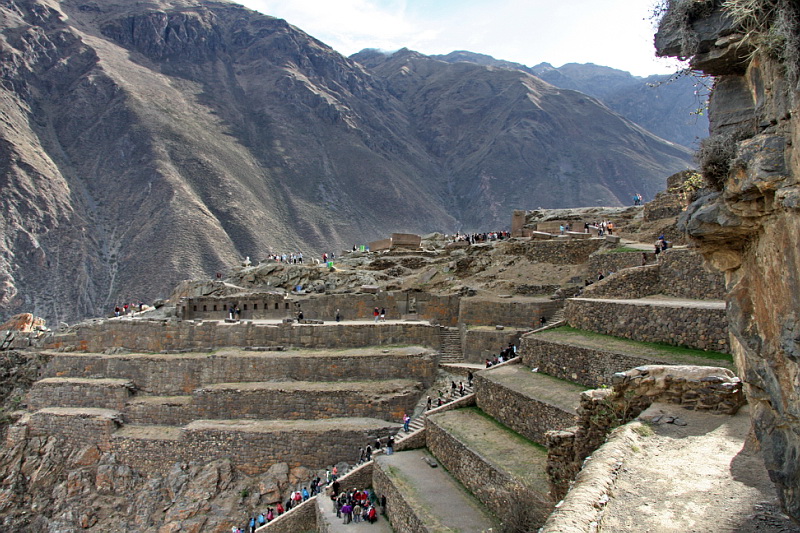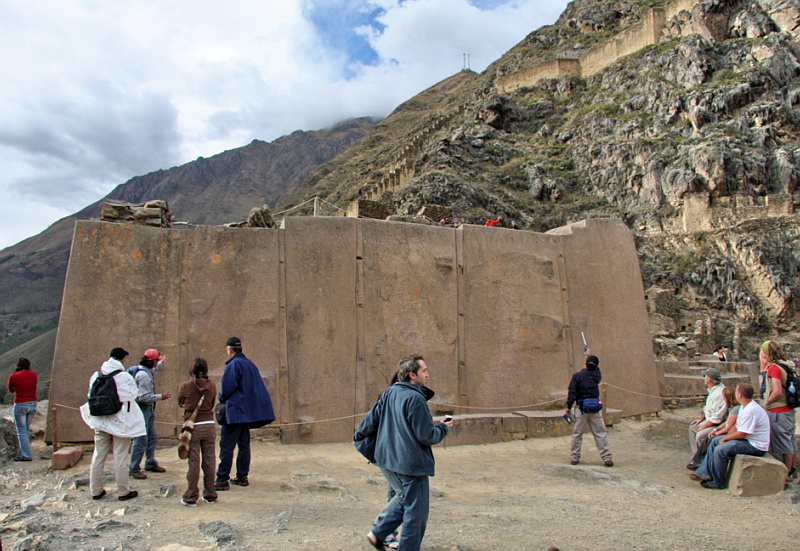Ollantaytambo
The origin of the name has several approaches. According to the Aymara language, Ollantaytambo derives from the word ulla-nta-wi, which means place to look downwards; the word tambo, is added subsequently. For Quechua language, the name derives from the word Ollanta (which is the name of an Incan Captain whose story is known through literature) and the word tambo, a Spanish derivation of the Quechua word tampu; which means city that offers lodging, food and comfort to travelers.

Testimonies of Ollantaytambo inhabitants give an account of the conflicts and aversions related to the Incas. The history says that the inhabitants refused to pay the taxes imposed by Inca Pachacъtec, and this is why they were murdered with impunity.
With the victory, Pachacъtec claimed the territory as his and ordered the construction of the magnificent buildings that, even today, the city flaunts. To this end, he used the manual labor of Collao, an area near the Titicaca Lake and Tiahuanaco, which also was defeated. The children of Chuchi Cбpac, defeated Collao general, had to work as the fortress builders, but they did not wait too long to rebel and run away. Finally, after many confrontations and a great bloodshed, the Inca Pachacъtec got to control the violent rebellion.
Ollantaytambo got engraved in the world's memory thanks to a written drama of the XVI century, represented on the theatre in 1780. The story narrates the conflictive love between general Ollanta and Cusi Coyllor, Pachacъtec's daughter. Ollanta distinguished himself from other generals of the Empire for his braveness and great ability, but he had to run away from the city disappointed because he was not able to love a girl that did not belong to his social class. Once he was far away, Ollanta encouraged his population to rebel against the imperial army, causing a war that lasted an entire decade. Finally, our hero was captured due to the betrayal of captain Rumiсahui and taken to Cusco before Tъpac Yupanqui; who, after hearing the story, decided to release him and accept him as the partner of her sister.
Another part of the history of this city was starred in by the indigenous resistance of Manco Inca, who, after keeping Cusco enclosed by months and on seeing that his strengths decreased, retreated to Ollantaytambo. The city offered him the perfect defense since it was covered by eleven graded cultivation terraces that enabled him to attain the victory in front of the Spaniards.
The Fortress or Royal House of the Sun

The Royal House of the Sun, and the entire Ollantaytambo, still maintains the urban planning design of the Incan times. Its rooms still remind us of the presence of Manco Inca, who confronted Hernando Pizarro in 1537, during the indigenous resistance that lasted many more years.
The function of this precinct is still discussed, just as in the case of Sacsayhuamбn. Some believe that it was a fortress destined for the protection of the city of Cusco; but others agree with a less martial function given the features of the place: cultivation terraces and finely carved walls on slopes.
The fortress or Indian temple is composed of seventeen superposed terraces made of large carved stones of red porphyry (pink granite) of over 4 meters high, 2 meters wide and two meters deep.
The walls of the Royal House of the Sun have an internal inclination and the main one is composed of six large-stone blocks with small-stone couplings that are part of the Main Altar.
It is believed that the main hewn stone, to build the place, was Cachicata, located at 6 km on the left side of the Vilcanota River. Rocks were partially carved at the hewn stones and then they were brought down to the valley. However, some of them, known as "tired stones", did not get to their destination.
The way in which the huge stones were transported from long distances is always impressive. In this case, they required an artificial channel parallel to the river so as to transport the immense rocks and take them up through a steep slope. They used instruments such as log rollers, rolling stones, camelidae-leather ropes, lever, pulleys and the strength of thousands of men.
It is believed that one of the backgrounds of this kind of construction is the architecture of Tiawanako, which could have been brought by the Collas from the region of the Titicaca Lake, since in the external surface of the room, to the southern edge, there are three carved symbols that belong to the pre-ceramic culture: the "Hanan Pacha" (The Heaven), the "Kay Pacha" (The Earth Surface) and the "Ukhu Pacha" (The Underground). But the Incan particularities are differentiated due to the use of couplings and finely polished external surfaces that were even used as mirrors.
If you want to know the mysteries and the strength of its walls, you can enter to the fortress through a grand staircase made of stone (journey of 15 to 20 minutes) that will lead you to an esplanade and an arcade facing the Maсay Racay Square.
Although some authors consider that the construction was not finished due to the stones that were left in the middle of the road, others believe that, due to the quality and some features of the work, the temple was finished when the Spaniards arrived and the so-called "tired stones" were destined for other similar edifications.
Inca Huatana

It is located at the upper part of the Temple of the Sun, on an almost vertical slope. The Inca Huatana or Intihuatana is constituted by a wall with high niches, on whose sides there are security holes of up to 80 cm. deep. In front of them, there is a structure suspended over a cliff, which makes us suppose that it was used to torture and execute war prisoners or malefactors. Even though the astronomic observatory functions is the most accepted theory.